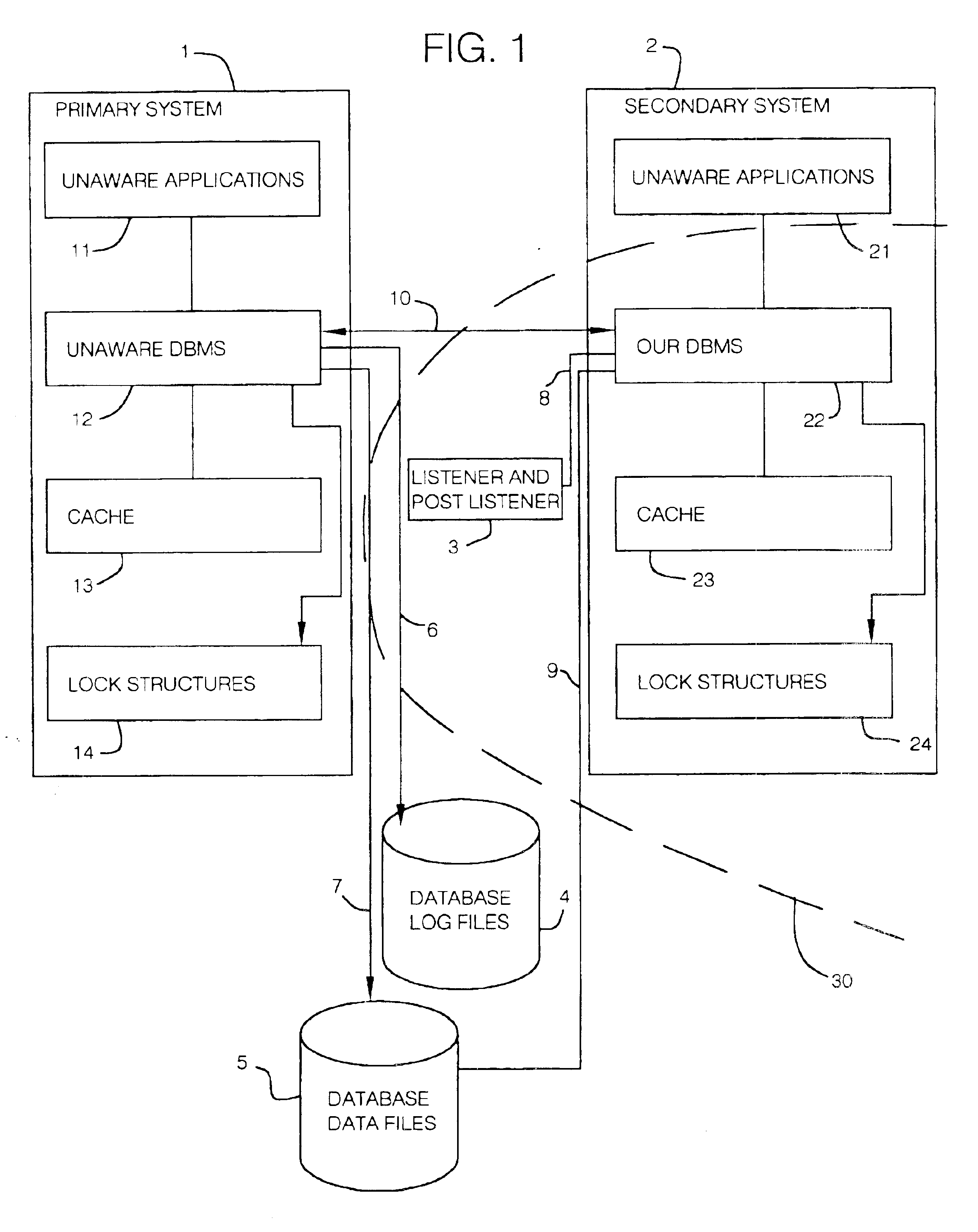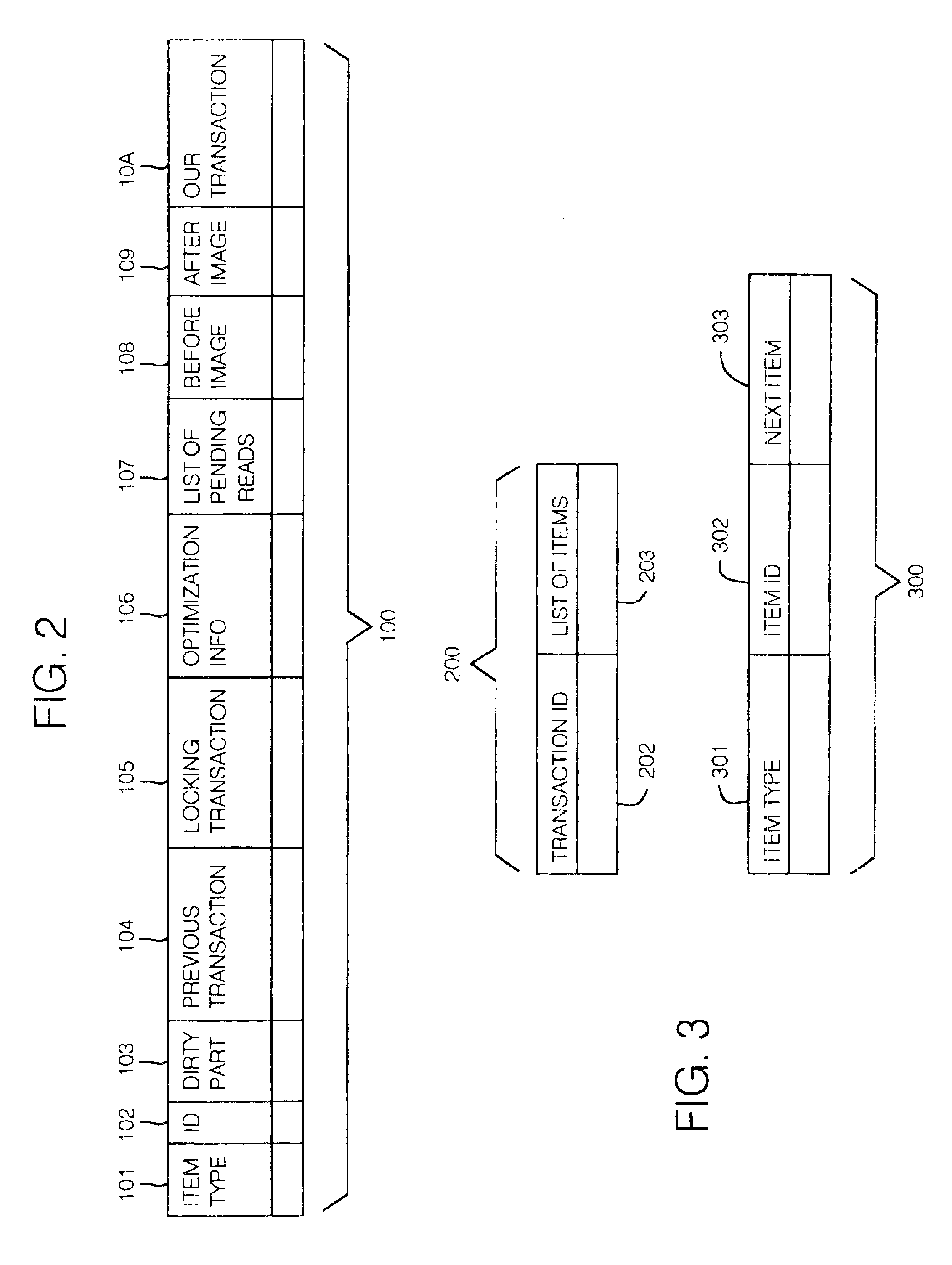Sharing live data with a non cooperative DBMS
a technology of live data and dbmss, which is applied in the field of sharing data, can solve the problems of inability to access live data maintained by such dbmss in a consistent way, long periods of time, and inability to compromise with data that is not up to da
- Summary
- Abstract
- Description
- Claims
- Application Information
AI Technical Summary
Benefits of technology
Problems solved by technology
Method used
Image
Examples
Embodiment Construction
Definitions and Notation
Non-Cooperative DBMS
Any DBMS that has not been created with the explicit intention to share data with our DBMS is a non-cooperative DBMS.
Item of Interest
An item in the database that the unaware DBMS might, occasionally, lock or maintain a copy of in the cache. When in the cache, items of interest are represented by cache entries 100 described in FIG. 2.
Depending on the behavior of the unaware DBMS, items of interest may be selected to be index blocks, data blocks, table rows, column values, specific bytes in a data row etc. In many parts of the description below, we have assumed that items of interest have been selected to represent table rows. In all these parts, an arbitrary item of interest could have been used instead.
If, for example, the unaware DBMS is IBM's DB2 and the option “change data capture” is not active for a given table then entire data rows cannot serve as items of interest and we are bound to use smaller items of interest.
Dirty Part Informat...
PUM
 Login to View More
Login to View More Abstract
Description
Claims
Application Information
 Login to View More
Login to View More - R&D
- Intellectual Property
- Life Sciences
- Materials
- Tech Scout
- Unparalleled Data Quality
- Higher Quality Content
- 60% Fewer Hallucinations
Browse by: Latest US Patents, China's latest patents, Technical Efficacy Thesaurus, Application Domain, Technology Topic, Popular Technical Reports.
© 2025 PatSnap. All rights reserved.Legal|Privacy policy|Modern Slavery Act Transparency Statement|Sitemap|About US| Contact US: help@patsnap.com



